MaryAnn Bernal's Blog, page 254
July 27, 2014
Book Launch - Encima Del Arco Iris (Spanish Edition) [Kindle Edition] (On Top of the Rainbow by K. Meador)

Cinco años viejo Gabe huye de casa. Mientras que en el bosque conoce a Lep y Elita y sube un arco iris. En la parte superior del arco iris debe hacer la decisión de cruzar a una tierra de deleite o volver a su familia que adora. Venga a visitar con Gabe, Lep y Elita como descubren la importancia del amor familiar.
Amazon link:
http://www.amazon.com/Encima-Del-Arco-Iris-Spanish-ebook/dp/B00L9JN5XK/ref=la_B0081NNBCC_1_7?s=books&ie=UTF8&qid=1406502256&sr=1-7
:
Kindle Price: $1.99

Published on July 27, 2014 17:22
Mr. Chuckles stirs the Wizard's Cauldron, whipping up the anti-bullying novella, Ty the Bull.

Ty the Bull is about bullies and divorce. Kid’s can be so cruel to each other. Bullying has been going on forever but now it is better in some ways because now it is more talked about.
This ten year old Ty has to deal with kids at school who turn on him as the wind blows. If things are not bad enough his parents have split up and he feels alone. Ty feels lonely. He doesn’t feel understood and doesn’t get the attention he needs.
Read the interview in its entirety at:
http://greenwizard62.blogspot.com/2014/07/brenda-perlin-chats-about-anti-bullying.html?showComment=1406495491718#c2440922065221700251

Published on July 27, 2014 14:19
The Night I Danced with Rommel by Elisabeth Marrion - Kindle Countdown Deal - limited time only
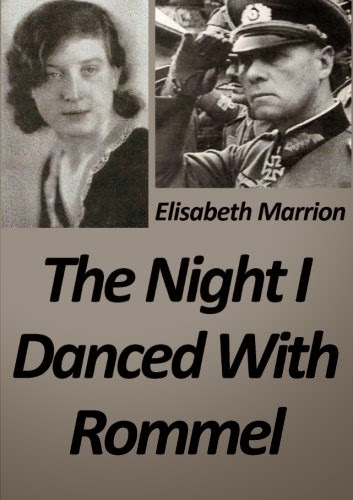 ‘ The Night I Danced with Rommel: Unbroken Bonds - Hilde's Story [Kindle Edition] Elisabeth Marrion (Author) Digital List Price: $2.99 What's this?
‘ The Night I Danced with Rommel: Unbroken Bonds - Hilde's Story [Kindle Edition] Elisabeth Marrion (Author) Digital List Price: $2.99 What's this?  Print List Price: $10.88 Kindle Price: $0.99 You Save: $9.89 (91%) Kindle Countdown DealPrice goes up to $2.99 in5 days, 17:38:31 Amazon UShttp://www.amazon.com/Night-Danced-Rommel-Unbroken-Hildes-ebook/dp/B00B854ZXY/ref=sr_1_1?ie=UTF8&qid=1406467274&sr=8-1&keywords=the+night+I+danced+with+rommelAmazon UKhttp://www.amazon.co.uk/Night-Danced-Rommel-Unbroken-Hildes-ebook/dp/B00B854ZXY/ref=sr_1_1?ie=UTF8&qid=1406467615&sr=8-1&keywords=the+night+I+danced+with+rommel May I have this dance, Hilde’ asked Field Marshal Rommel, opening the Grande Ball held in his honour.
Print List Price: $10.88 Kindle Price: $0.99 You Save: $9.89 (91%) Kindle Countdown DealPrice goes up to $2.99 in5 days, 17:38:31 Amazon UShttp://www.amazon.com/Night-Danced-Rommel-Unbroken-Hildes-ebook/dp/B00B854ZXY/ref=sr_1_1?ie=UTF8&qid=1406467274&sr=8-1&keywords=the+night+I+danced+with+rommelAmazon UKhttp://www.amazon.co.uk/Night-Danced-Rommel-Unbroken-Hildes-ebook/dp/B00B854ZXY/ref=sr_1_1?ie=UTF8&qid=1406467615&sr=8-1&keywords=the+night+I+danced+with+rommel May I have this dance, Hilde’ asked Field Marshal Rommel, opening the Grande Ball held in his honour. Did this dance save the life of Hilde’s Polish friends?
Hilde had come a long way since her dream of becoming a singer was shattered when her father made arrangements for her to work as a housekeeper in Berlin at the tender age of fourteen.
Hilde’s life is thrown into turmoil in Berlin during the late 1920’s early 1930’s. Having Polish friends meant it was becoming increasingly unsafe for her to stay there and she finds a new life in the Harz mountains.
In Goslar, Hilde meets her husband, Karl, a young officer in the German Army.
When he joins the 7th Panzer Brigade led by General Erwin Rommel at the beginning of World War II, Hilde is left to bring up their children in war-torn Germany.
Hilde’s story is based on facts and is told here by her youngest daughter, Elisabeth. a.slateLink:link{ color: rgb(119,119,119); text-decoration:none;} a.slateLink:active { color: rgb(119,119,119); text-decoration:none;} a.slateLink:visited{ color: rgb(119,119,119); text-decoration:none;} a.slateLink:hover{ color: rgb(119,119,119); text-decoration:none;} .shuttleGradient { float:left; width:100%; text-align:left; line-height: normal; position:relative; height:43px; background-color:#dddddd; background-image: url(http://g-ecx.images-amazon.com/images... background-position: bottom; background-repeat : repeat-x; } .shuttleTextTop { font-size:18px; font-weight:bold; font-family:verdana,arial,helvetica,sans-serif; color: rgb(119,119,119); margin-left:10px; } .shuttleTextBottom { margin-top:-2px; font-size:15px; font-family:verdana,arial,helvetica,sans-serif; color: rgb(119,119,119); margin-left:10px; } .outercenterslate{ cursor:pointer; } .innercenterslate{ overflow: hidden; } .slateoverlay{ position: absolute; top: 0px; border: 0px } .centerslate { display: table-cell; background-color:black; text-align: center; vertical-align: middle; } .centerslate * { vertical-align: middle; } .centerslate { display/*\**/: block\9 } /*\*//*/ .centerslate { display: block; } .centerslate span { display: inline-block; height: 100%; width: 1px; } /**/

Published on July 27, 2014 06:27
NEW MOON PROMOTION*** 25 July for one week only!

 Destiny of AngelsTraumatic events in her childhood, send Angel Parsons upon a different life path.
Destiny of AngelsTraumatic events in her childhood, send Angel Parsons upon a different life path.Fifteen years later, with the help of her new 'family' and the resurrected relationship with Jenny Parkes, her only friend from school, Angel confronts the perpetrators of her misery. Rather than seeking revenge and to free herself from her past, Angel uses the skills she has acquired to offer her persecutors the chance of redemption.
Will Angel fulfil her destiny and put her past behind her or will the demons she unleashes consume herself and her 'family' and leave her empty and alone once more? Wrath of AngelsAngel Parsons – wife, lover, entrepreneur and witch – is back and though she strives to put her past behind her, Lilith the Dark Goddess has other ideas.
Angel has the power at her finger tips. The choice is hers. Will she evoke her wrath to take her revenge on Lilith or will she summon nature's forces and the strongest emotion on earth to put right the wrongs of the Dark Goddess? Links:US http://ow.ly/zu4ND
http://ow.ly/zu539
UK
http://o...w.ly/zu4TF
http://ow.ly/zu59w

Published on July 27, 2014 05:52
History Trivia - Danish King Waldemar IV destroys Visby Gotland
July 27
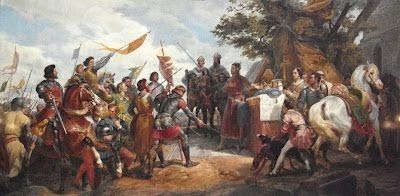
1054 Siward, Earl of Northumbria invaded Scotland to support Malcolm Canmore against Macbeth of Scotland, who usurped the Scottish throne from Malcolm's father, King Duncan. Macbeth was defeated at Dunsinane.
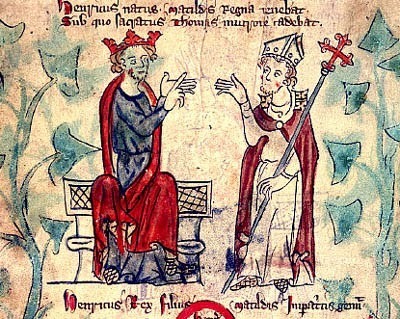
1170: Thomas Becket and King Henry II temporarily reconciled. Becket's six-year self-imposed exile from England was resolved when he met with Henry and King Louis VII of France at a conference in Freteval and settled on an uneasy truce. Becket made preparations to return to his See in Canterbury.
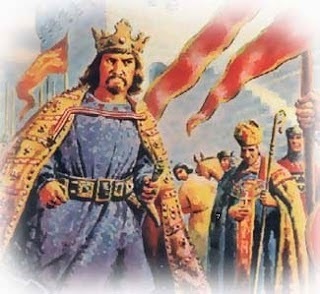
1214 King John lost Normandy and his other French possessions after being defeated by Philip II of France in the Battle of Bouvines.
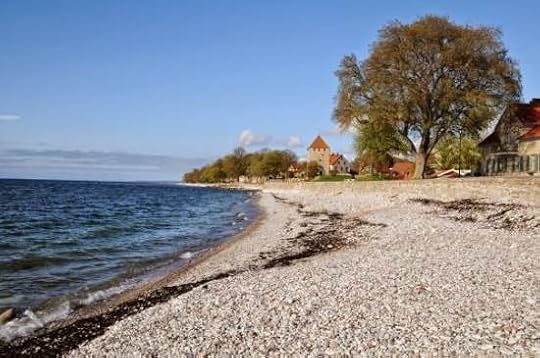
1360 Danish King Waldemar IV destroyed Visby Gotland (Sweden's largest island, which is also the largest island in the Baltic Sea).


1054 Siward, Earl of Northumbria invaded Scotland to support Malcolm Canmore against Macbeth of Scotland, who usurped the Scottish throne from Malcolm's father, King Duncan. Macbeth was defeated at Dunsinane.

1170: Thomas Becket and King Henry II temporarily reconciled. Becket's six-year self-imposed exile from England was resolved when he met with Henry and King Louis VII of France at a conference in Freteval and settled on an uneasy truce. Becket made preparations to return to his See in Canterbury.

1214 King John lost Normandy and his other French possessions after being defeated by Philip II of France in the Battle of Bouvines.

1360 Danish King Waldemar IV destroyed Visby Gotland (Sweden's largest island, which is also the largest island in the Baltic Sea).

Published on July 27, 2014 04:47
July 26, 2014
My review of Ty the Bull by Brenda Perlin
 Ty the Bull is a heartwarming account of a child’s experience with bullies. Rex cannot explain why he became a target and shares his feelings about the effect this horrific situation had on his behavior. This is a story of hope and a must read for any child going through a similar experience.
Ty the Bull is a heartwarming account of a child’s experience with bullies. Rex cannot explain why he became a target and shares his feelings about the effect this horrific situation had on his behavior. This is a story of hope and a must read for any child going through a similar experience.Amazon US
http://www.amazon.com/Ty-Bull-Miss-Brenda-Perlin/dp/1500156213/ref=sr_1_1_bnp_1_pap?ie=UTF8&qid=1406420998&sr=8-1&keywords=ty+the+bull
Amazon UK
http://www.amazon.co.uk/Ty-Bull-Miss-Brenda-Perlin/dp/1500156213/ref=sr_1_1_bnp_1_pap?ie=UTF8&qid=1406420944&sr=8-1&keywords=ty+the+bull

Published on July 26, 2014 17:30
History Trivia - Offa, king of Mercia dies
July 26
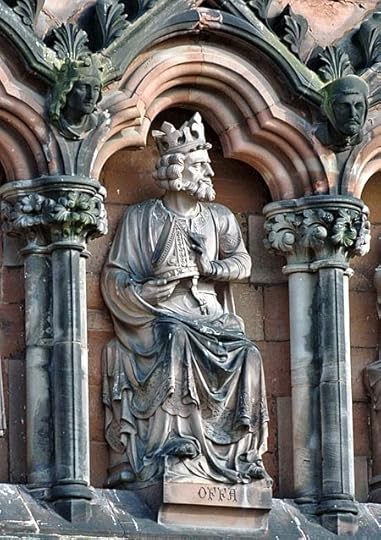
796 Offa, king of Mercia died. Many historians regard Offa as the most powerful Anglo-Saxon king before Alfred the Great.
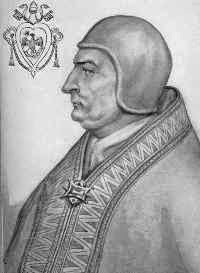
1267 Inquisition formed in Rome under Pope Clement IV.
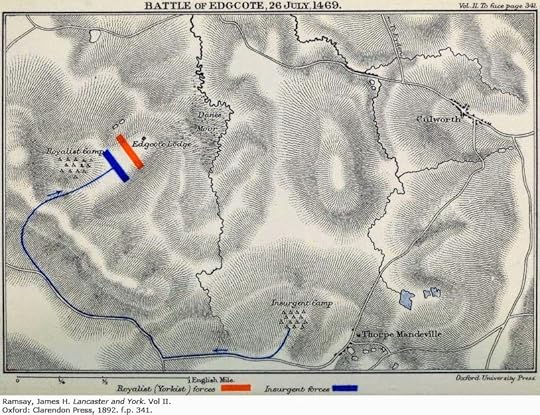
1469 Wars of the Roses: the Battle of Edgecote Moor pitted the forces of Richard Neville, 16th Earl of Warwick against those of Edward IV of England took place.
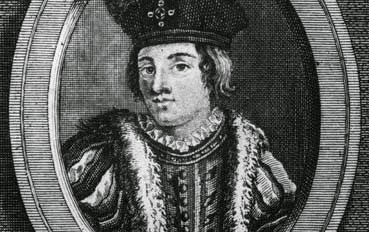
1497 "Edward IV's son" Perkin Warbeck’s army landed in Cork.


796 Offa, king of Mercia died. Many historians regard Offa as the most powerful Anglo-Saxon king before Alfred the Great.

1267 Inquisition formed in Rome under Pope Clement IV.

1469 Wars of the Roses: the Battle of Edgecote Moor pitted the forces of Richard Neville, 16th Earl of Warwick against those of Edward IV of England took place.

1497 "Edward IV's son" Perkin Warbeck’s army landed in Cork.

Published on July 26, 2014 05:11
July 25, 2014
Richard III visitor centre in Leicester opens its doors to the public
Visitors to the £4.5m centre will see a replica skeleton of the Plantagenet king and the grave that held his body for 500 years
Maev Kennedy
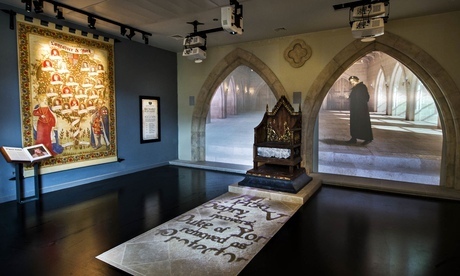
The Richard III Visitor Centre will showcase the king's life, reign and gruesome death at the Battle of Bosworth in 1485. Photograph: Christian DezeluIn the heart of Leicester, visitors will be invited to gaze down through a pane of glass into a rough oblong hole in the ground: the grave that for more than 500 years held the body of the last Plantagenet king, Richard III.
An outline of the skeleton with the twisted spine is projected on to the red-brown earth. The pit also holds the yellow pegs used by the excavators from the University of Leicester archaeology service in August 2012 to mark a discovery that would make front-page news around the world.
The city council now hopes the crowds who followed the story so avidly will come to its £4.5m visitor centre, opening to the public on Saturday. The attraction tells the tale of Richard's life, brief reign and death at the Battle of Bosworth in 1485, and the discovery of his hastily dug and slightly too small grave in what had been the choir of the long-vanished Greyfriars church.
The sound of diggers, hammers, and chisels clatters in the narrow surrounding streets: new gardens are being created, flowers planted, expensive stone paving laid, benches and explanatory plaques installed. Next spring, when Richard is reburied in a handsome new tomb in the cathedral just 100 yards away and a display on medieval Leicester is installed in the Guildhall, the transformation of the most historic quarter of the city will be complete.
"We're expecting visitors from all over the world, but I certainly think everyone in Leicester will want to come, and I hope it will become very much part of the fabric of the city, so that when any friends or relatives visit, the first thing people will want to do is bring them here," said Iain Gordon, director of the centre.
Even before the press conference in February last year when, after months of tests, the university announced "beyond reasonable doubt" that they had found Richard, the council had taken a leap of faith and bought the freehold of a Victorian school building that had stood empty and decaying across the road from the cathedral since 2008.
When the archaeologists dug up broken stones with Gothic carving there, they first thought they'd found part of a great medieval window that would once have lit the king's grave. In fact, they came from a demolished school outbuilding.
Although generations of children had played unknowingly over the ruins of the church, the grave lay just on the other side of their playground wall, under the tarmac of a council-owned car park. That has now been joined to the former school and the grave sheltered in a stone and glass building.
As well as replicas of the skeleton and the skull, Richard's head has been recreated as it is believed to have looked in life. The displays include the union jack-patterned Hunter wellies worn at the site by Philippa Langley, the author and member of the Richard III Society, which raised the money and persuaded the university archaeologists to take on the search.
Nearby there are the hard hat and high-vis jacket worn by Mathew Morris when he found Richard's bones in the first hour of the first day – and buried them again for later study, assuming they would prove to be of no particular interest.
There is also a photograph of Richard Buckley, the excavation project director, eating a hard-hat-shaped biscuit. When he launched the project, Buckley was so convinced they'd find nothing except a few traces of the lost friary – if they were lucky – that he promised to eat his hat if they found the king. His team baked him a more palatable alternative.
The displays also explain a story that casts a dark shadow over Richard's reign: how his brother's young sons, whom he declared illegitimate in order to claim the crown, vanished in the Tower of London. However, it leaves open the question of whether they were actually killed on Richard's orders.
"Did Richard kill the little princes in the Tower? My position is that I sit firmly on the fence," Buckley said. "What I will say is that Richard was probably no better and no worse than any other late medieval king."
http://www.theguardian.com/uk-news/2014/jul/22/richard-iii-visitor-centre-leicester
Maev Kennedy

The Richard III Visitor Centre will showcase the king's life, reign and gruesome death at the Battle of Bosworth in 1485. Photograph: Christian DezeluIn the heart of Leicester, visitors will be invited to gaze down through a pane of glass into a rough oblong hole in the ground: the grave that for more than 500 years held the body of the last Plantagenet king, Richard III.
An outline of the skeleton with the twisted spine is projected on to the red-brown earth. The pit also holds the yellow pegs used by the excavators from the University of Leicester archaeology service in August 2012 to mark a discovery that would make front-page news around the world.
The city council now hopes the crowds who followed the story so avidly will come to its £4.5m visitor centre, opening to the public on Saturday. The attraction tells the tale of Richard's life, brief reign and death at the Battle of Bosworth in 1485, and the discovery of his hastily dug and slightly too small grave in what had been the choir of the long-vanished Greyfriars church.
The sound of diggers, hammers, and chisels clatters in the narrow surrounding streets: new gardens are being created, flowers planted, expensive stone paving laid, benches and explanatory plaques installed. Next spring, when Richard is reburied in a handsome new tomb in the cathedral just 100 yards away and a display on medieval Leicester is installed in the Guildhall, the transformation of the most historic quarter of the city will be complete.
"We're expecting visitors from all over the world, but I certainly think everyone in Leicester will want to come, and I hope it will become very much part of the fabric of the city, so that when any friends or relatives visit, the first thing people will want to do is bring them here," said Iain Gordon, director of the centre.
Even before the press conference in February last year when, after months of tests, the university announced "beyond reasonable doubt" that they had found Richard, the council had taken a leap of faith and bought the freehold of a Victorian school building that had stood empty and decaying across the road from the cathedral since 2008.
When the archaeologists dug up broken stones with Gothic carving there, they first thought they'd found part of a great medieval window that would once have lit the king's grave. In fact, they came from a demolished school outbuilding.
Although generations of children had played unknowingly over the ruins of the church, the grave lay just on the other side of their playground wall, under the tarmac of a council-owned car park. That has now been joined to the former school and the grave sheltered in a stone and glass building.
As well as replicas of the skeleton and the skull, Richard's head has been recreated as it is believed to have looked in life. The displays include the union jack-patterned Hunter wellies worn at the site by Philippa Langley, the author and member of the Richard III Society, which raised the money and persuaded the university archaeologists to take on the search.
Nearby there are the hard hat and high-vis jacket worn by Mathew Morris when he found Richard's bones in the first hour of the first day – and buried them again for later study, assuming they would prove to be of no particular interest.
There is also a photograph of Richard Buckley, the excavation project director, eating a hard-hat-shaped biscuit. When he launched the project, Buckley was so convinced they'd find nothing except a few traces of the lost friary – if they were lucky – that he promised to eat his hat if they found the king. His team baked him a more palatable alternative.
The displays also explain a story that casts a dark shadow over Richard's reign: how his brother's young sons, whom he declared illegitimate in order to claim the crown, vanished in the Tower of London. However, it leaves open the question of whether they were actually killed on Richard's orders.
"Did Richard kill the little princes in the Tower? My position is that I sit firmly on the fence," Buckley said. "What I will say is that Richard was probably no better and no worse than any other late medieval king."
http://www.theguardian.com/uk-news/2014/jul/22/richard-iii-visitor-centre-leicester

Published on July 25, 2014 16:59
Digging up trouble: beware the curse of King Tutankhamun
Jonathan Jones
The ancient Egyptian boy-king's tomb was excavated in 1923, then people started dropping like flies. A new exhibition explores the greatest archaeology story ever told
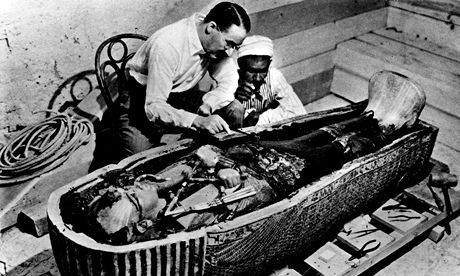 The mummy's curse … Archaeologist Howard Carter examining the coffin of Tutankhamen. Photograph: The Life Picture Collection/Getty The curse of Tutankhamun first struck in February 1923. The previous November, the intrepid archaeologist Howard Carter and his sponsor Lord Carnarvon discovered the burial chamber of a forgotten boy-king hidden in the Valley of the Kings in Egypt, untouched by robbers and stuffed with treasures.
The mummy's curse … Archaeologist Howard Carter examining the coffin of Tutankhamen. Photograph: The Life Picture Collection/Getty The curse of Tutankhamun first struck in February 1923. The previous November, the intrepid archaeologist Howard Carter and his sponsor Lord Carnarvon discovered the burial chamber of a forgotten boy-king hidden in the Valley of the Kings in Egypt, untouched by robbers and stuffed with treasures.
They were soaking up the press attention as Tutankhamun, forgotten for millennia, suddenly became world famous – and so did his discoverers.
Then Lord Carnarvon got bitten on the cheek by a mosquito. He accidentally made the bite worse while shaving, and died in a delirious fever.
Arthur Conan Doyle, creator of Sherlock Holmes and ardent believer in the supernatural, said it must be the "curse" of the mummy. Death was decreed on anyone who disturbed the young pharaoh, reported newspapers.
With an exhibition about Howard Carter and the discovery of Tutankhamun opening on 24 July at Oxford's Ashmolean Museum, should the university city be worried? Is King Tut's curse about to strike Oxford?
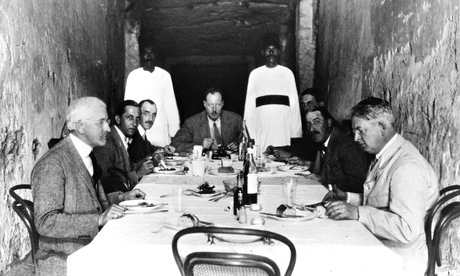 Left to right: James Henry Breasted, Harry Burton, Alfred Lucas, Arthur Callender, Arthur Mace, Howard Carter and Alan Gardiner eat lunch in the tomb of Ramesses XI in 1923. Photograph: Lord Carnarvon/Griffith Institute, University of Oxford The media in the 1920s found plenty of evidence that something was punishing the excavators of the most perfect ancient Egyptian burial chamber ever found. Lord Carnarvon's pet bird was eaten by a snake, his dog died back in England almost the exact moment he kicked the bucket in Egypt, and a radiologist who supposedly x-rayed the mummy died of a mysterious illness. A rich American died of pneumonia after visiting the tomb, and a member of Carter's excavation team was said to have died of arsenic poisoning.
Left to right: James Henry Breasted, Harry Burton, Alfred Lucas, Arthur Callender, Arthur Mace, Howard Carter and Alan Gardiner eat lunch in the tomb of Ramesses XI in 1923. Photograph: Lord Carnarvon/Griffith Institute, University of Oxford The media in the 1920s found plenty of evidence that something was punishing the excavators of the most perfect ancient Egyptian burial chamber ever found. Lord Carnarvon's pet bird was eaten by a snake, his dog died back in England almost the exact moment he kicked the bucket in Egypt, and a radiologist who supposedly x-rayed the mummy died of a mysterious illness. A rich American died of pneumonia after visiting the tomb, and a member of Carter's excavation team was said to have died of arsenic poisoning.
No wonder that in 1932, a decade after Tutankhamun's discovery, the Boris Karloff horror film The Mummy was closely modelled on the story of this famous find.
But of course there was no curse. If Tutankhamun wanted revenge, why spare Howard Carter, the man who actually found him and lived to tell the tale? The expedition mortality rate was no higher than you'd expect among the imperial British at the time – Lord Carnarvon should have been more wary of mosquito bites.
 Transporting objects from King Tutankhamun's tomb. Photograph: Griffith Institute, University of Oxford Even without the beguiling legend of the curse, the tale of how Tutankhamun's tomb was discovered is a thrilling encounter with archaeology at its most spectacular. Today's archaeologists stress patient analysis of small pieces of pottery from carefully measured trenches, a scientific approach pioneered in Egypt by the Victorian great, Sir William Matthew Flinders Petrie. By Petrie's modern scientific standards, Carter and Carnarvon were naive and out of touch, looking for lost treasure like characters in some Boy's Own story.
Transporting objects from King Tutankhamun's tomb. Photograph: Griffith Institute, University of Oxford Even without the beguiling legend of the curse, the tale of how Tutankhamun's tomb was discovered is a thrilling encounter with archaeology at its most spectacular. Today's archaeologists stress patient analysis of small pieces of pottery from carefully measured trenches, a scientific approach pioneered in Egypt by the Victorian great, Sir William Matthew Flinders Petrie. By Petrie's modern scientific standards, Carter and Carnarvon were naive and out of touch, looking for lost treasure like characters in some Boy's Own story.
Yet anyone lucky enough to see Tutankhamun and his burial objects in the Egyptian Museum in Cairo wonders in awe at the sheer richness of this panoply of exquisite art and design. From his chairs and games to his golden mask, the young pharaoh and his lifestyle survive as miraculously as the ash-imprisoned people of Pompeii.
The Ashmolean's exhibition revisits the greatest archaeological story ever told. Even the true bits of it are amazing.
http://www.theguardian.com/artanddesign/jonathanjonesblog/2014/jul/23/mummy-curse-legend-discovering-tutankhamun-ashmolean-museum
The ancient Egyptian boy-king's tomb was excavated in 1923, then people started dropping like flies. A new exhibition explores the greatest archaeology story ever told
 The mummy's curse … Archaeologist Howard Carter examining the coffin of Tutankhamen. Photograph: The Life Picture Collection/Getty The curse of Tutankhamun first struck in February 1923. The previous November, the intrepid archaeologist Howard Carter and his sponsor Lord Carnarvon discovered the burial chamber of a forgotten boy-king hidden in the Valley of the Kings in Egypt, untouched by robbers and stuffed with treasures.
The mummy's curse … Archaeologist Howard Carter examining the coffin of Tutankhamen. Photograph: The Life Picture Collection/Getty The curse of Tutankhamun first struck in February 1923. The previous November, the intrepid archaeologist Howard Carter and his sponsor Lord Carnarvon discovered the burial chamber of a forgotten boy-king hidden in the Valley of the Kings in Egypt, untouched by robbers and stuffed with treasures.They were soaking up the press attention as Tutankhamun, forgotten for millennia, suddenly became world famous – and so did his discoverers.
Then Lord Carnarvon got bitten on the cheek by a mosquito. He accidentally made the bite worse while shaving, and died in a delirious fever.
Arthur Conan Doyle, creator of Sherlock Holmes and ardent believer in the supernatural, said it must be the "curse" of the mummy. Death was decreed on anyone who disturbed the young pharaoh, reported newspapers.
With an exhibition about Howard Carter and the discovery of Tutankhamun opening on 24 July at Oxford's Ashmolean Museum, should the university city be worried? Is King Tut's curse about to strike Oxford?
 Left to right: James Henry Breasted, Harry Burton, Alfred Lucas, Arthur Callender, Arthur Mace, Howard Carter and Alan Gardiner eat lunch in the tomb of Ramesses XI in 1923. Photograph: Lord Carnarvon/Griffith Institute, University of Oxford The media in the 1920s found plenty of evidence that something was punishing the excavators of the most perfect ancient Egyptian burial chamber ever found. Lord Carnarvon's pet bird was eaten by a snake, his dog died back in England almost the exact moment he kicked the bucket in Egypt, and a radiologist who supposedly x-rayed the mummy died of a mysterious illness. A rich American died of pneumonia after visiting the tomb, and a member of Carter's excavation team was said to have died of arsenic poisoning.
Left to right: James Henry Breasted, Harry Burton, Alfred Lucas, Arthur Callender, Arthur Mace, Howard Carter and Alan Gardiner eat lunch in the tomb of Ramesses XI in 1923. Photograph: Lord Carnarvon/Griffith Institute, University of Oxford The media in the 1920s found plenty of evidence that something was punishing the excavators of the most perfect ancient Egyptian burial chamber ever found. Lord Carnarvon's pet bird was eaten by a snake, his dog died back in England almost the exact moment he kicked the bucket in Egypt, and a radiologist who supposedly x-rayed the mummy died of a mysterious illness. A rich American died of pneumonia after visiting the tomb, and a member of Carter's excavation team was said to have died of arsenic poisoning.No wonder that in 1932, a decade after Tutankhamun's discovery, the Boris Karloff horror film The Mummy was closely modelled on the story of this famous find.
But of course there was no curse. If Tutankhamun wanted revenge, why spare Howard Carter, the man who actually found him and lived to tell the tale? The expedition mortality rate was no higher than you'd expect among the imperial British at the time – Lord Carnarvon should have been more wary of mosquito bites.
 Transporting objects from King Tutankhamun's tomb. Photograph: Griffith Institute, University of Oxford Even without the beguiling legend of the curse, the tale of how Tutankhamun's tomb was discovered is a thrilling encounter with archaeology at its most spectacular. Today's archaeologists stress patient analysis of small pieces of pottery from carefully measured trenches, a scientific approach pioneered in Egypt by the Victorian great, Sir William Matthew Flinders Petrie. By Petrie's modern scientific standards, Carter and Carnarvon were naive and out of touch, looking for lost treasure like characters in some Boy's Own story.
Transporting objects from King Tutankhamun's tomb. Photograph: Griffith Institute, University of Oxford Even without the beguiling legend of the curse, the tale of how Tutankhamun's tomb was discovered is a thrilling encounter with archaeology at its most spectacular. Today's archaeologists stress patient analysis of small pieces of pottery from carefully measured trenches, a scientific approach pioneered in Egypt by the Victorian great, Sir William Matthew Flinders Petrie. By Petrie's modern scientific standards, Carter and Carnarvon were naive and out of touch, looking for lost treasure like characters in some Boy's Own story.Yet anyone lucky enough to see Tutankhamun and his burial objects in the Egyptian Museum in Cairo wonders in awe at the sheer richness of this panoply of exquisite art and design. From his chairs and games to his golden mask, the young pharaoh and his lifestyle survive as miraculously as the ash-imprisoned people of Pompeii.
The Ashmolean's exhibition revisits the greatest archaeological story ever told. Even the true bits of it are amazing.
http://www.theguardian.com/artanddesign/jonathanjonesblog/2014/jul/23/mummy-curse-legend-discovering-tutankhamun-ashmolean-museum

Published on July 25, 2014 16:52
Tyrannosaur 'Gangs' Terrorized Ancient Landscape
By Tia Ghose
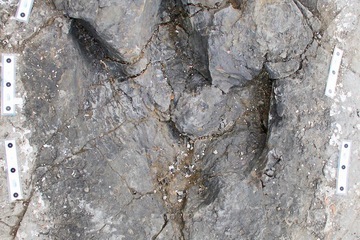
 Three trackways made by tyrannosaurs have recently been unearthed in Canada. The trackways suggest the giant predators may have been pack hunters
Three trackways made by tyrannosaurs have recently been unearthed in Canada. The trackways suggest the giant predators may have been pack hunters
Credit: Richard McCreaSome 70 million years ago, three tyrannosaurs stalked together across a mud flat in Canada, possibly searching for prey.
The new insight comes from several parallel tyrannosaur tracks unearthed in Canada. The dinosaur tracks provide stronger evidence for a controversial theory: That the fearsome mega-predators hunted in packs.
The ferocious beasts may have "stuck together as a pack to increase their chances of bringing down prey and individually surviving," said study co-author Richard McCrea, a curator at the Peace Region Palaeontology Center in Canada
Tyrannosaur hunting
Paleontologists have long debated whether Tyrannosaurus rex and its cousins, such as Albertosaurus, hunted alone or in groups.
While most researchers believe the predators were lone wolves, so to speak, multiple Albertosaurus specimens found in a single bone bed in Canada's Dry Island Buffalo Jump Provincial Park have led some to propose that tyrannosaurs were pack animals.
But finding groups of bones together isn't definitive evidence for pack hunting, because bones can move after death. Other circumstances can cause fossil skeletons to accumulate in one location. For instance, many carnivores wandered individually into classic predator traps, such as the La Brea tar pits in Los Angeles, but probably didn't hunt together in life, McCrea said.
Track marks unearthed
In 2011, a local hunting outfitter and guide, Aaron Fredlund, unearthed two tyrannosaur track marks in the foothills of the Canadian Rockies in British Columbia and then told McCrea's team about the discovery.
The team eventually discovered a patch 197 feet (60 meters) long by 13 feet (4 m) wide filled with footprints from multiple dinosaurs, including tyrannosaurs, other small theropods, and duck-billed dinosaurs called hadrosaurs. These dinosaurs were apparently walking in the silty sediments from an overflowing river and formed the track marks about 70 million years ago. A thick layer of volcanic ash then preserved the marks, McCrea said.
In total, the team found seven tracks that were made by three tyrannosaurs. Though the researchers couldn't identify the specific species, it's likely given the period and location where they were found that Albertosaurus , Gorgosaurus or Daspletosaurus left the tracks, McCrea said.
Though the other dinosaur tracks there are all pointing in random directions, the tyrannosaur footprints are parallel with each other. The tyrannosaurs also left prints of about the same depth in the wet sediments, suggesting they crossed through the area at the same time. (As the mud dries, the depth of footprints becomes shallower.)
The new find may be one of the world's oldest examples of a missed connection. "The hadrosaur footprints are much more shallow, indicating that they came later," possibly just a few hours or days after the tyrannosaurs, McCrea told Live Science.
Pack animals
The new tracks suggest that the tyrannosaurs may have hunted in packs to take down large prey, just as wolves do today.
"An individual wolf would not be able to take out a moose, but a pack of them would," McCrea said.
Similarly, pack hunting could explain how tyrannosaurs could kill hadrosaurs, which are almost as large as the predators, without sustaining horrific injuries, he said.
That doesn't mean tyrannosaurs would have been friendly to one another. In fact, other fossils reveal that the dinosaurs liked to head-bite each other. But the tyrannosaurs may have stuck together to hunt because it increased their odds of survival, McCrea said.
The new discovery also highlights the rough life of these hunters. One of the beasts was missing bones in its left foot, which is in keeping with many of the injuries found on other tyrannosaur specimens, McCrea said.
http://www.livescience.com/46965-tyrannosaurs-were-pack-animals.html

 Three trackways made by tyrannosaurs have recently been unearthed in Canada. The trackways suggest the giant predators may have been pack hunters
Three trackways made by tyrannosaurs have recently been unearthed in Canada. The trackways suggest the giant predators may have been pack huntersCredit: Richard McCreaSome 70 million years ago, three tyrannosaurs stalked together across a mud flat in Canada, possibly searching for prey.
The new insight comes from several parallel tyrannosaur tracks unearthed in Canada. The dinosaur tracks provide stronger evidence for a controversial theory: That the fearsome mega-predators hunted in packs.
The ferocious beasts may have "stuck together as a pack to increase their chances of bringing down prey and individually surviving," said study co-author Richard McCrea, a curator at the Peace Region Palaeontology Center in Canada
Tyrannosaur hunting
Paleontologists have long debated whether Tyrannosaurus rex and its cousins, such as Albertosaurus, hunted alone or in groups.
While most researchers believe the predators were lone wolves, so to speak, multiple Albertosaurus specimens found in a single bone bed in Canada's Dry Island Buffalo Jump Provincial Park have led some to propose that tyrannosaurs were pack animals.
But finding groups of bones together isn't definitive evidence for pack hunting, because bones can move after death. Other circumstances can cause fossil skeletons to accumulate in one location. For instance, many carnivores wandered individually into classic predator traps, such as the La Brea tar pits in Los Angeles, but probably didn't hunt together in life, McCrea said.
Track marks unearthed
In 2011, a local hunting outfitter and guide, Aaron Fredlund, unearthed two tyrannosaur track marks in the foothills of the Canadian Rockies in British Columbia and then told McCrea's team about the discovery.
The team eventually discovered a patch 197 feet (60 meters) long by 13 feet (4 m) wide filled with footprints from multiple dinosaurs, including tyrannosaurs, other small theropods, and duck-billed dinosaurs called hadrosaurs. These dinosaurs were apparently walking in the silty sediments from an overflowing river and formed the track marks about 70 million years ago. A thick layer of volcanic ash then preserved the marks, McCrea said.
In total, the team found seven tracks that were made by three tyrannosaurs. Though the researchers couldn't identify the specific species, it's likely given the period and location where they were found that Albertosaurus , Gorgosaurus or Daspletosaurus left the tracks, McCrea said.
Though the other dinosaur tracks there are all pointing in random directions, the tyrannosaur footprints are parallel with each other. The tyrannosaurs also left prints of about the same depth in the wet sediments, suggesting they crossed through the area at the same time. (As the mud dries, the depth of footprints becomes shallower.)
The new find may be one of the world's oldest examples of a missed connection. "The hadrosaur footprints are much more shallow, indicating that they came later," possibly just a few hours or days after the tyrannosaurs, McCrea told Live Science.
Pack animals
The new tracks suggest that the tyrannosaurs may have hunted in packs to take down large prey, just as wolves do today.
"An individual wolf would not be able to take out a moose, but a pack of them would," McCrea said.
Similarly, pack hunting could explain how tyrannosaurs could kill hadrosaurs, which are almost as large as the predators, without sustaining horrific injuries, he said.
That doesn't mean tyrannosaurs would have been friendly to one another. In fact, other fossils reveal that the dinosaurs liked to head-bite each other. But the tyrannosaurs may have stuck together to hunt because it increased their odds of survival, McCrea said.
The new discovery also highlights the rough life of these hunters. One of the beasts was missing bones in its left foot, which is in keeping with many of the injuries found on other tyrannosaur specimens, McCrea said.
http://www.livescience.com/46965-tyrannosaurs-were-pack-animals.html

Published on July 25, 2014 16:47



